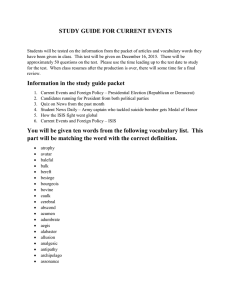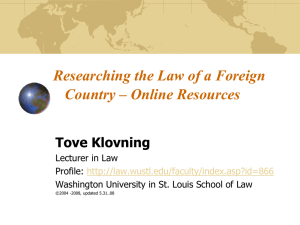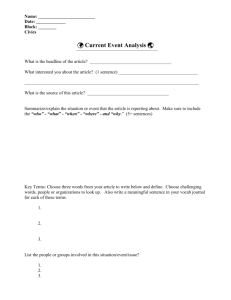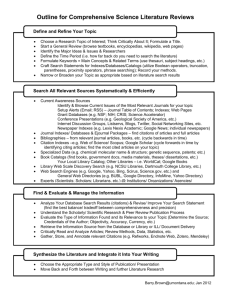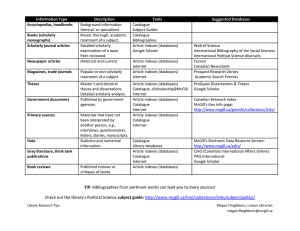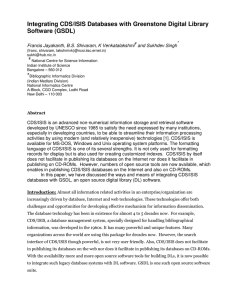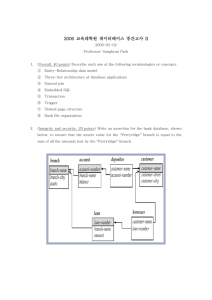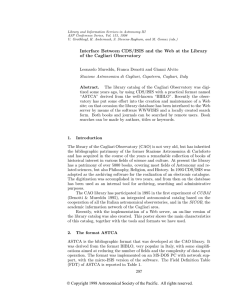The WWWIRIS-interface for web-based access to CDS/ISIS databases
advertisement
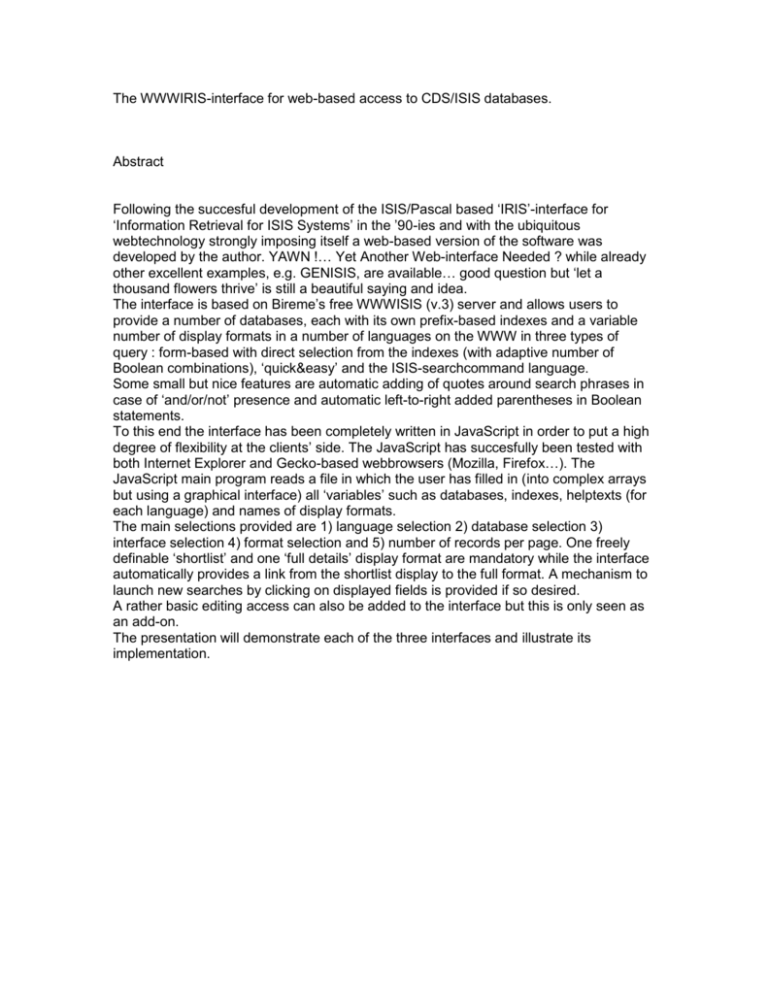
The WWWIRIS-interface for web-based access to CDS/ISIS databases. Abstract Following the succesful development of the ISIS/Pascal based ‘IRIS’-interface for ‘Information Retrieval for ISIS Systems’ in the ’90-ies and with the ubiquitous webtechnology strongly imposing itself a web-based version of the software was developed by the author. YAWN !… Yet Another Web-interface Needed ? while already other excellent examples, e.g. GENISIS, are available… good question but ‘let a thousand flowers thrive’ is still a beautiful saying and idea. The interface is based on Bireme’s free WWWISIS (v.3) server and allows users to provide a number of databases, each with its own prefix-based indexes and a variable number of display formats in a number of languages on the WWW in three types of query : form-based with direct selection from the indexes (with adaptive number of Boolean combinations), ‘quick&easy’ and the ISIS-searchcommand language. Some small but nice features are automatic adding of quotes around search phrases in case of ‘and/or/not’ presence and automatic left-to-right added parentheses in Boolean statements. To this end the interface has been completely written in JavaScript in order to put a high degree of flexibility at the clients’ side. The JavaScript has succesfully been tested with both Internet Explorer and Gecko-based webbrowsers (Mozilla, Firefox…). The JavaScript main program reads a file in which the user has filled in (into complex arrays but using a graphical interface) all ‘variables’ such as databases, indexes, helptexts (for each language) and names of display formats. The main selections provided are 1) language selection 2) database selection 3) interface selection 4) format selection and 5) number of records per page. One freely definable ‘shortlist’ and one ‘full details’ display format are mandatory while the interface automatically provides a link from the shortlist display to the full format. A mechanism to launch new searches by clicking on displayed fields is provided if so desired. A rather basic editing access can also be added to the interface but this is only seen as an add-on. The presentation will demonstrate each of the three interfaces and illustrate its implementation.


